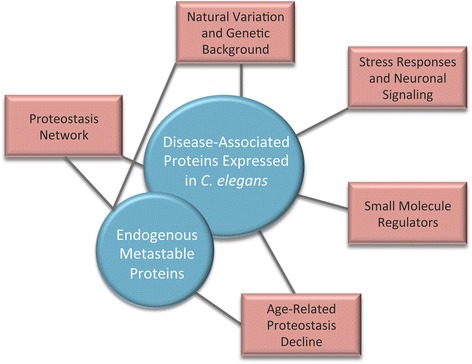Fig. 1.

Using C. elegans models of protein folding to study the regulation of proteostasis. This review discusses how two different types of folding sensors, disease-associated aggregation-prone proteins and metastable endogenous proteins (shown in blue), have been used to uncover the proteostasis network, reveal how natural variation and genetic background modulate the protein folding environment, reveal how proteostasis declines during aging, and identify small molecule regulators of proteostasis (shown in red). Black lines connect the two categories of folding sensors to the research areas in which each was employed as a tool
